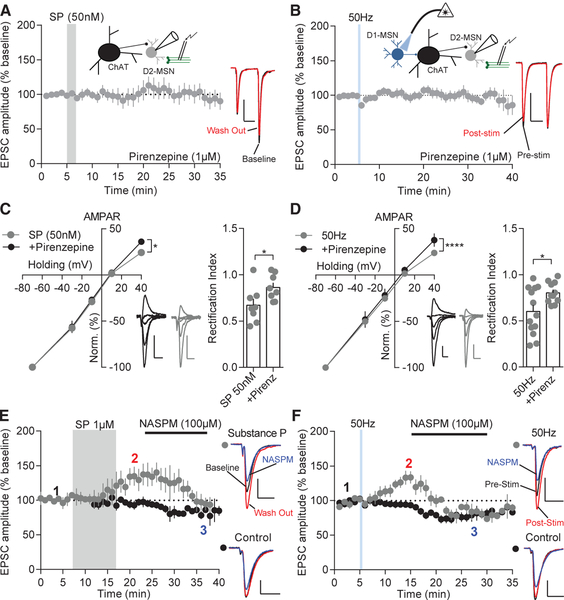Figure 6. D2-MSN AMPAR Insertion by Substance P or D1-MSN 50-Hz Stimulation Is M1R Dependent.
(A) D2-MSN excitatory potentiation by substance P is blocked by pirenzepine (p > 0.05; n = 9).
(B) D2-MSN excitatory potentiation by D1-MSN 50-Hz stimulation is blocked by pirenzepine (p > 0.05; n = 9).
(C) AMPAR-evoked current-voltage relationship indicates inward rectification is enhanced at +40 mV by substance P (p < 0.05; n = 7 and 10) and the rectification index is significantly decreased (p < 0.05; n = 7 and 10). Representative traces of substance P (gray) and substance P in the presence of pirenzepine (black) are shown. Scale bars: 100 pA, 25 ms.
(D) Inward rectification of AMPAR currents is enhanced at +40 mV by D1-MSN 50-Hz stimulation (p < 0.05; n = 10 and 12), and the rectification index is significantly decreased (p < 0.05; n = 10 and 12). Representative traces of D1-MSN 50-Hz stimulation (gray) and 50 Hz stimulation in the presence of pirenzepine (black) are shown.
(E) NASPM suppresses substance-P-potentiated EPSCs to control levels. Representative traces: baseline (black); substance P wash out (red); and NASPM (blue; p < 0.05; n = 5 and 4).
(F) NASPM suppresses stimulation-potentiated EPSCs to control levels. Representative traces: pre-stimulation (black); post-stimulation (red); and NASPM (blue; p < 0.05; n = 7 and 7).
Error bars represent SEM. *p < 0.05, **p < 0.01, ***p < 0.001, ****p < 0.0001. For exact statistics, see Table S1. See also Figure S6.

